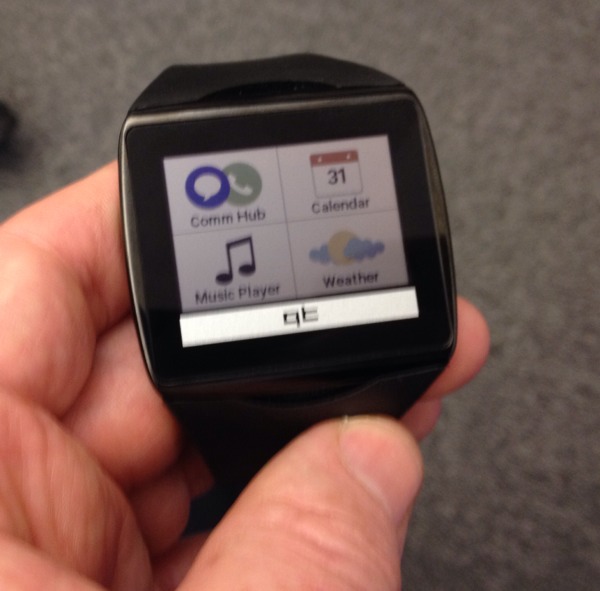I was telling Rose about a small photographic accessory that plugged into the hotshoe.
“The what?”
“The hotshoe.”
“That’s what it’s called? I thought you sneezed.”
I was telling Rose about a small photographic accessory that plugged into the hotshoe.
“The what?”
“The hotshoe.”
“That’s what it’s called? I thought you sneezed.”
This is St Mary’s church in Saffron Walden, and I love the contrast of dark and light. Doesn’t it look as if it might be floodlit? But that’s all natural light, on a somewhat overcast day. Larger versions here.
More experiments with my new Fuji X-Pro1 this evening. This is a fairly ordinary landscape shot, but I’m pleased with it because there was very little light, it was hand-held (with a monopod) at 1/9 sec on ISO 1000, and it was raining slightly.
Click for a larger version.
A few days ago I became the proud owner of a Fujifilm X-Pro1, which is one of the most interesting cameras I’ve owned for a while.
It has a pleasingly retro look, is very nicely put together, and follows the old range-finder style, with an optical viewfinder offset from the lens. This design has a whole host of usability challenges to do with parallax and focussing, but it hasn’t stopped, say, Leica, from being rather successful with it – and in the past it was the only option if you didn’t want the bulk of an SLR.
But today we have digital mirrorless cameras for this – you can see through the lens using the digital sensor and a screen – so it is somewhat eccentric still to use a viewfinder in which, quite often, part of the image is actually obscured by the lens itself. But the separate viewfinder also has advantages of clarity and frame rate, and of giving you a field of view larger than the image you’re about to capture, so you can see, for example, whether someone is about to walk into the frame.
The clever thing about the X-Pro1, though, is that it does both. The optical viewfinder has some digital overlays on it showing extra information (framing, focus points and histograms, for example) but can also switch into a fully-digital mode, where you’re seeing exactly what the lens sees. And there’s the screen on the back if you prefer that. Plenty of choice, and exceedingly cunning. It even has some unexpected tricks up its sleeve: if you’re in optical viewfinder mode and focusing manually, you can click a button and it switches to a dramatically zoomed-in digital view, with focus peaking if wanted. Press again and you’re back to optical.
There are much easier cameras out there to use: the autofocus is not particularly sophisticated by modern standards, for example, even when you aren’t trying to do it through a separate viewfinder. Not only is this not just a point-and-shoot, if you pick it up expecting to use it as one, you’re likely to be disappointed. It keeps you thinking all the time, which is partly why I bought it: I thought I could learn a lot from this camera.
But the other reason was the image quality. The Fuji lenses are superb, and the sensor, which is an APS-C size, such as you’d find in most consumer-level DSLRs, is larger than in most cameras of this size and is generally agreed to be superior even to most other APS-C sensors thanks to some Fuji innovations. But the camera has been out for nearly a year and a half, so there are plenty of reviews out there you can read if you want to know more.
I’m still learning and making lots of mistakes, but I’m also loving it. For something that I can sling over my shoulder, and not notice when it’s in my bag, I’ve got a few very pleasing images even in my first couple of days. A few samples below – you can click through to Flickr and find ‘View all sizes’ in the bottom-right menu if you want to get a feel for the clarity.
The Cambridge University Computer Lab
Dr Richard Clayton
Bridge planks
The Roger Needham Building
I’m sitting in a traffic jam behind a car bearing a sticker, “Atomkraft? Nein danke.” (Nuclear power? No thanks!)

I’ve always liked this design, which has been around for some time – the sun with the smiley face makes it into a nice, happy, positive statement. It’s a clever bit of marketing.
However, the sun is, of course, powered by… ?
Seth Brown has been doing some experiments. There are still many unanswered questions, but it’s a more rigorous approach than most of us have ever tried!
Nicely done!
Thanks to Hap for the link.
I’m not very good at keeping up with politics and current affairs in general at present, and one treat I always allow myself on holiday is the shedding of even the limited news-reading and Today-programme-listening that I normally do.
And so the Snowden affair, which started while I was away, largely passed me by: when I got back they were discussing intricacies of conspiracy theories and extradition orders and it was a bit like trying to pick up a TV mini-series by starting on the third or fourth episode. I’ll save learning about it for when the movie version comes out.
But I did think John Lanchester’s article in yesterday’s Guardian was a pretty sane discussion of the issues, even for those of us who missed the opening chapters.
Nice extract:
I call this the “knowing you’re gay” test. Most of us know someone who has plucked up the courage to reveal their homosexuality, only to be cheerfully told by friends and family, “oh, we’ve known that for years”.
Now, though, search engines know facts about people’s thoughts and fantasies long before anyone else does. To put it crudely, Google doesn’t just know you’re gay before you tell your mum; it knows you’re gay before you do. And now GCHQ does too.
I was fortunate enough to get to play with one if these today – a Qualcomm Toq – one of the first to be publicly shown.

It’s very nicely put together, slightly bigger than my Pebble, with a colour e-ink touch screen, and wireless charging. But Qualcomm have created this more, they say, to seed the market and demonstrate their technology than because they intend to sell it directly; though the idea of making some available (at around $300) is being discussed.
I hope they do. That’s quite a lot for a watch, but it has a quality feel to it. The key question will be whether they can get good SDKs to developers early on, and whether they can make it play nicely with non-jailbroken iPhones… It’s not very easy to get past the restrictions that Apple (for some good reasons) imposes on developers, but at that price, they would probably be targeting the Apple-buying market.
In-store signage is often not very well thought out. Long-time readers may remember the seasonal toilet rolls at one of my local stores, and an aisle entirely free of long-life milk at another.
Yesterday we spotted this in HomeSense in Cambridge:
The bizarre messages continue elsewhere in the store. Above one checkout was a sign with an arrow saying “Pay up to 60% less here.” Less than what? Less than the ticketed price? Less than at any other checkout in the store? Do these people have any grasp of how meaningless these signs are? Or — more worryingly — do signs as meaningless as this actually work on the general populace?
Now, they may be cleverer than they look. My nephew Matt points out that they might be trying to encourage people to buy today because the savings will be lower tomorrow. This does make some sense, because it’s the kind of store that, though it looks mildly interesting from the outside, I think few people would voluntarily enter twice.
 It’s three years since Steve Jobs announced FaceTime, Apple’s video chat technology. It’s a fine system, and yet I realise that I can count the number of times I’ve used it on the fingers of one hand.
It’s three years since Steve Jobs announced FaceTime, Apple’s video chat technology. It’s a fine system, and yet I realise that I can count the number of times I’ve used it on the fingers of one hand.
This is chiefly because Skype does rather more, and does it on non-Apple devices. I have dozens of Skype contacts, and can easily see which of them are online and likely to be disturbable at any time. With FaceTime, I haven’t yet even found a list showing which of my friends have it.
However, the thing Skype doesn’t particularly give you is a good mobile experience. I’ve used it on my phone a great deal when abroad; with hotel wifi it can save a fortune in roaming charges. But, on iOS at least, you want to turn it off as soon as you’re done with it and not leave it running in the background, or your battery won’t last beyond your siesta. So it’s a way for you to contact other people, but not for them to contact you. FaceTime should handle this much better.
With the release of IOS 7, too, FaceTime gains an audio-only option, making it more of a direct Skype competitor (something Google Hangouts also need to offer, by the way). And as Skype’s user interface gets progressively worse with each release (something that can’t be blamed solely on their new owners, Microsoft) and since it’s no longer the secure service it once was (something which can), I think I may be giving FaceTime more of a trial in the future.
© Copyright Quentin Stafford-Fraser
Recent Comments